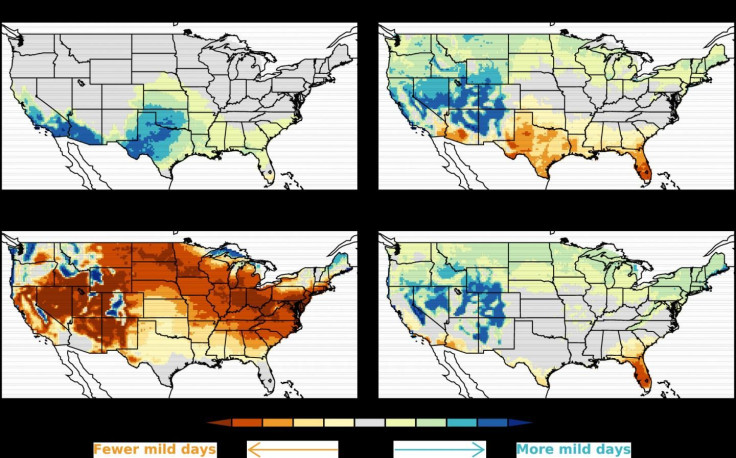Climate Change News: Shifting Mild Weather Pattern; US Gives $500 Million To UN Climate Fund

The Department of State announced Tuesday the United States gave the Green Climate Fund — an international climate fund established under the United Nations Framework Convention on Climate Change and the Paris Agreement — $500 million. It was the second such installment, the first having been made in March 2016, of the $3 billion President Barack Obama committed to GCF.
.@statedeptspox: U.S. announcing additional grant to Green Climate Fund pic.twitter.com/QLy6rFd7vi
— Department of State (@StateDept) January 17, 2017
A statement on the State Department’s website said: “This funding is provided from the fiscal year 2016 Economic Support Fund appropriation. U.S. funding for the GCF continues U.S. government support by this and prior Administrations for climate change programs through multilateral funds.”
Obama, who has taken numerous steps to solidify his environmental legacy, made the commitment in 2014, and Tuesday’s action came just three days before he is to quit office to make way for President-elect Donald Trump, who has a very different approach to climate change, calling it “weather” and a Chinese hoax. He has also threatened to pull the U.S. out of the Paris Agreement and to stop all funding to global warming mitigation programs. Apart from this, Trump has also chosen climate change-skeptics and fossil fuel industry leaders to be a part of his administration.
Irrespective of what Trump chooses to believe, however, climate change is real, as is the fact that humans are largely responsible for it.
In a press release Wednesday, the National Oceanic and Atmospheric Administration (NOAA) said its scientists, along with those at Princeton University, had predicted how climate change will affect mild weather patterns around Earth.
For the purpose of the predictions, scientists define mild weather “as temperatures between 64 and 86 degrees Fahrenheit, with less than a half inch of rain and dew points below 68 degrees Fahrenheit, indicative of low humidity.”

The study, which was published in the journal Climatic Change, found the total number of mild weather days globally will drop by 10 to 13 percent by the end of the century as a result of increasing greenhouse gases in the atmosphere, largely as a result of human activity. That means a decrease from the current global average of 74 days a year to 64 days a year sometime between 2081 and 2100.
But local variations could be a lot more dramatic. “The hardest-hit areas are expected to be in Africa, Asia and Latin America, where some regions could see 15 to 50 fewer days of mild weather a year by the end of the century. These are also areas where NOAA and partner research shows economic damages due to climate change. The loss of mild weather days, especially during summer, when they can serve to break up extended heatwaves, also could significantly affect public health,” the press release said.

In contrast, much of the U.S., many parts of Canada, northern Europe and extreme southern South America will gain mild weather days, as many as 15 more days every year on average, by the end of the 21st century.
Sarah Kapnick, a physical scientist at NOAA’s Geophysical Fluid Dynamics Laboratory and co-author of the study, said: “We believe improving the public understanding of how climate change will affect something as important as mild weather is an area ripe for more research and more focused studies. Predicting changes in mild weather is not only important to business and industry, but can also contribute to research on the future of physical and mental health, leisure and urban planning.”
© Copyright IBTimes 2024. All rights reserved.




















